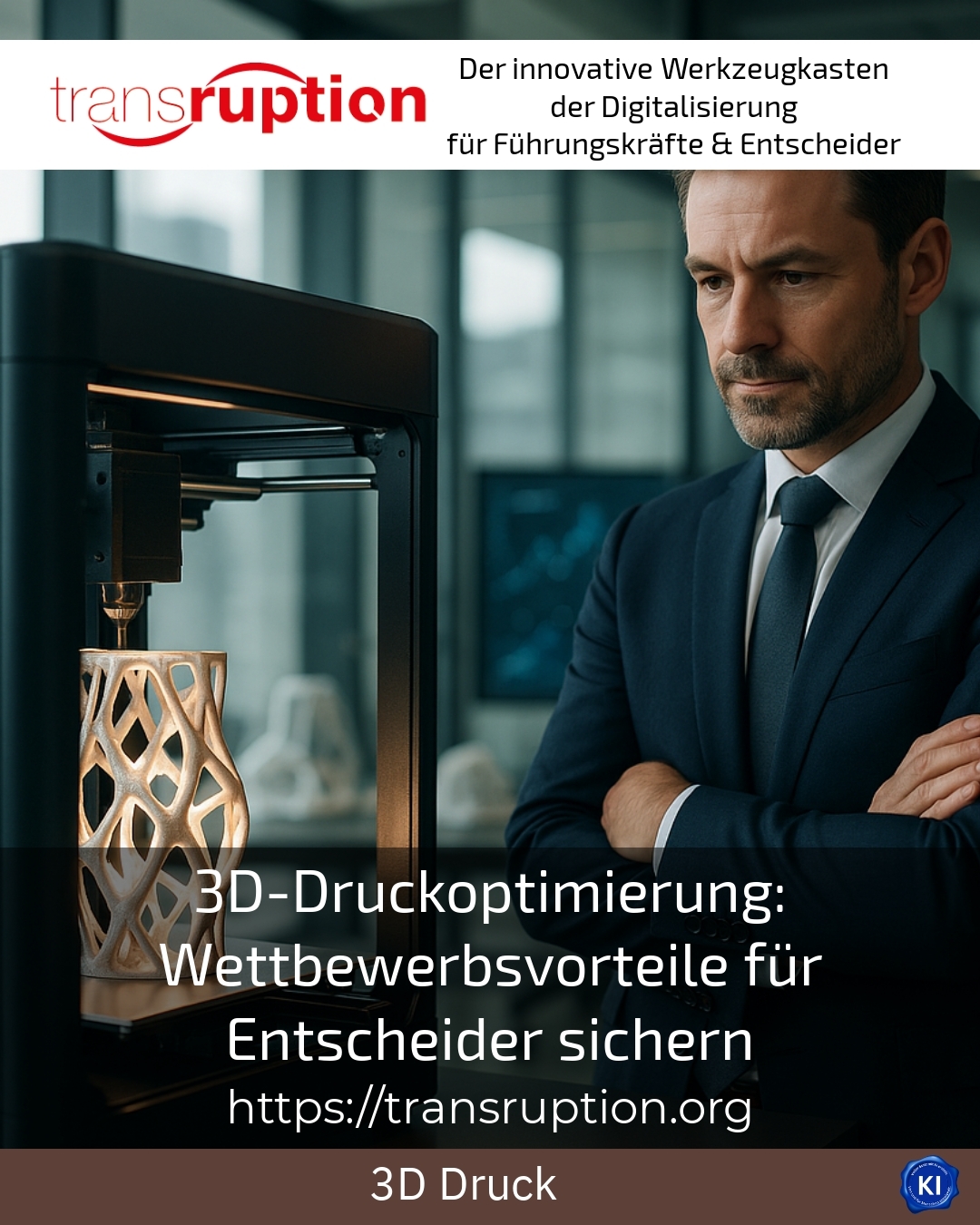3D printing optimisation opens up a wide range of opportunities for companies to secure competitive advantages in the long term. Targeted measures can make processes more efficient, reduce costs and bring products to market faster. Decision-makers benefit from increased flexibility and optimised use of resources, which is becoming increasingly important, especially in demanding industries.
Flexibility and efficiency at the heart of 3D printing optimisation
Additive manufacturing offers decisive advantages because it makes production faster and more cost-effective. Companies use this flexibility to manufacture customised products in small quantities. For example, manufacturers in the medical technology sector can quickly produce customised prostheses that are precisely tailored to the patient. In mechanical engineering, 3D-printed spare parts enable just-in-time production directly at the point of need. And in the consumer goods industry, personalised pieces of jewellery or limited edition collector's items are created to boost customer loyalty and sales.
This allows production lines to respond more flexibly to customer requests while reducing warehousing and logistics costs. 3D printing optimisation supports these developments with process adaptations and intelligent software solutions that minimise material costs and production time.
Topology optimisation as the key to material and cost savings
One of the most effective methods for 3D printing optimisation is topology optimisation. It enables the production of components that only contain the necessary material but are still stable and functional. In the aerospace industry, this reduces weight significantly, which saves fuel and improves the environmental footprint. Manufacturers in the automotive industry also benefit from lighter components that are also robust and fulfil high requirements.
Companies often report significant cost savings because material consumption is reduced and the printing time is shorter. This increases the efficiency of production while simultaneously reducing the ecological footprint. This sustainable production method is becoming increasingly important in industries ranging from mechanical engineering to jewellery manufacturing.
BEST PRACTICE at the customer (name hidden due to NDA contract) A medium-sized manufacturer from the automotive industry integrated topology optimisation into its component development. The result was a weight reduction of 30 per cent with the same stability, combined with shorter production times and lower material costs. This enabled the company to significantly strengthen its competitive position.
Rapid prototyping: fast innovations through 3D printing optimisation
An important effect of 3D printing optimisation is the acceleration of development processes. Rapid prototyping enables companies to quickly convert design ideas into physical models and test them. This allows for very short feedback cycles and iterative improvements. Start-ups and SMEs benefit in particular because they can quickly develop market-ready products on a small budget.
For example, architecture firms use 3D printing to create true-to-scale models of their designs. This enables clients and planners to discover optimisation potential at an early stage. The on-demand production of spare parts also saves time and money in the transport sector by eliminating the need for stock.
BEST PRACTICE at the customer (name hidden due to NDA contract) A mechanical engineering company reduced the development time of its prototypes by several weeks by using additive manufacturing. This enabled faster market launches and a flexible response to customer feedback.
Sustainability and resource conservation through innovative production
Sustainability is becoming increasingly important worldwide. 3D printing optimisation supports this through the targeted reduction of material usage and waste. This enables companies to reduce their ecological footprint and achieve economic benefits at the same time. This is a decisive factor for future success, particularly in industries such as aviation, automotive and medical technology.
Additive manufacturing makes it possible to design products in such a way that material is only used where structural requirements demand it. This not only reduces costs, but also leads to lighter and more efficient components. At the same time, the entire manufacturing process can be localised, simplifying the supply chain.
Practical coaching for 3D printing optimisation
Many companies are looking for support to fully exploit the potential of 3D printing optimisation. Experienced coaching helps them to integrate the technology into existing processes. Both technical issues and organisational challenges are addressed.
The consultancy focuses on specific practical examples, process optimisations and digital tools that increase efficiency. This creates impetus that helps to implement projects in a targeted manner and strengthen competitiveness.
BEST PRACTICE at the customer (name hidden due to NDA contract) A production company used transruption coaching to optimise the internal use of 3D printing systems. This led to shorter delivery times and reduced production costs. Employees were able to take on operational tasks more independently thanks to targeted training.
My analysis
3D printing optimisation offers decision-makers significant competitive advantages as it combines flexibility, cost efficiency and sustainability in production. The diverse application examples show that companies can accelerate and customise their processes through targeted measures. The combination of topology optimisation, rapid prototyping and lean manufacturing in particular ensures strategic added value. Those who support and implement these impulses will significantly strengthen their position on the market and meet future challenges with innovative solutions.
Further links from the text above:
Topology optimisation for 3D printing
3D printing processes: Competitive advantages for decision-makers
Shape the future: 3D printing in companies
3D printing: How managers are securing competitive advantages now
10 reasons why you should use 3D printing
For more information and if you have any questions, please contact Contact us or read more blog posts on the topic TRANSRUPTION here.
















